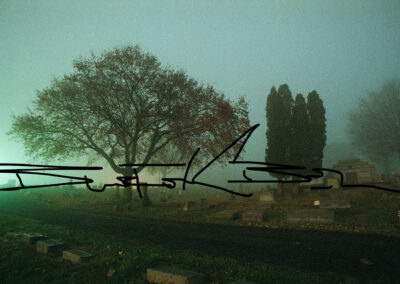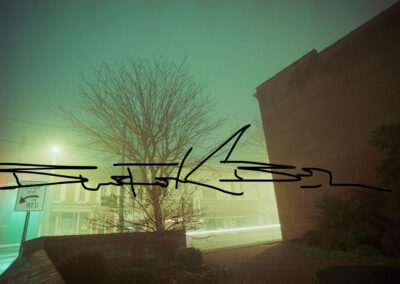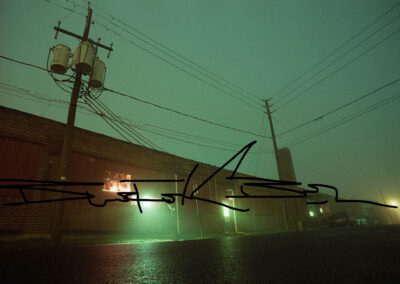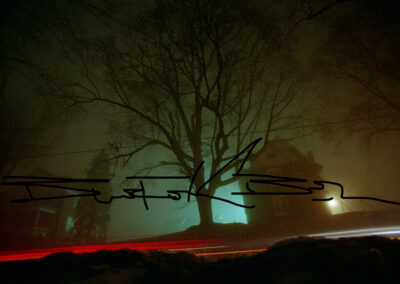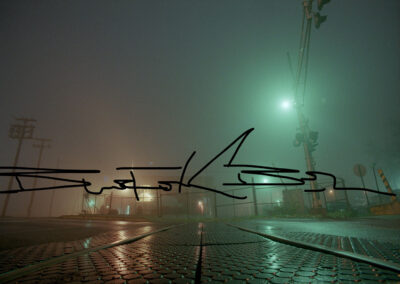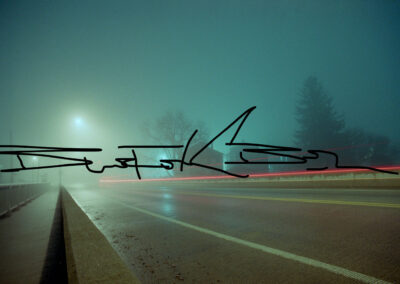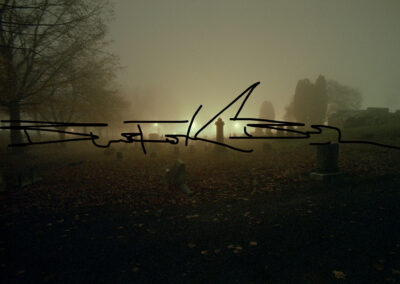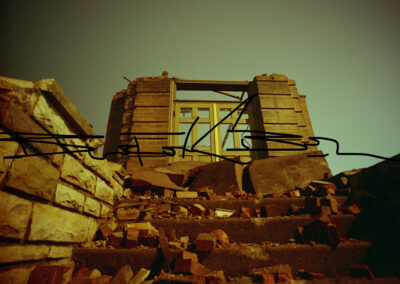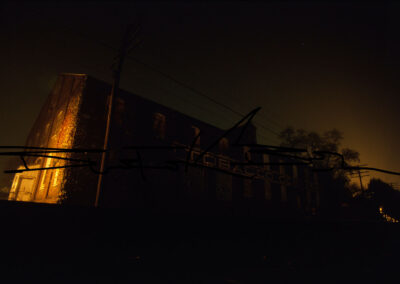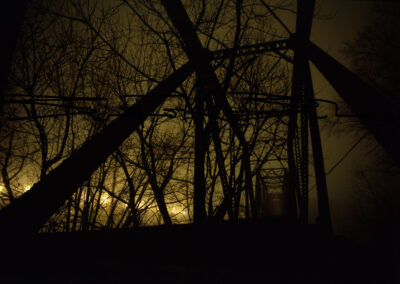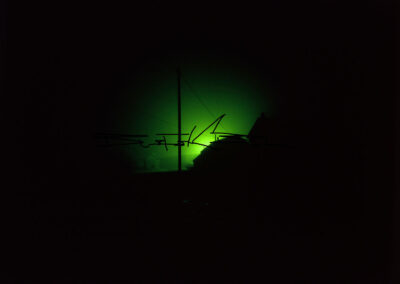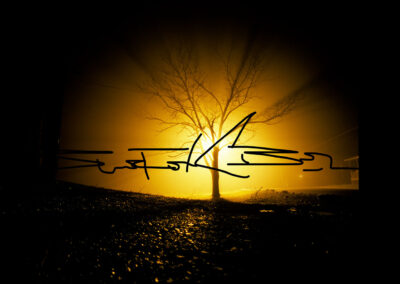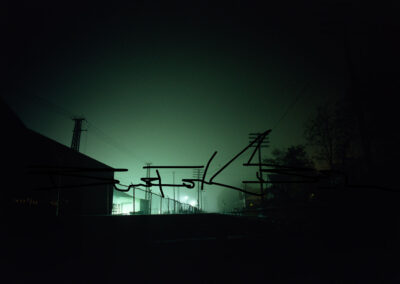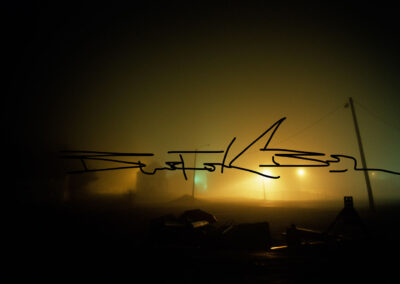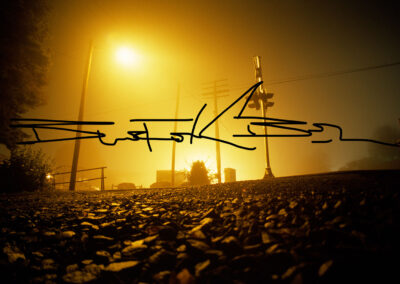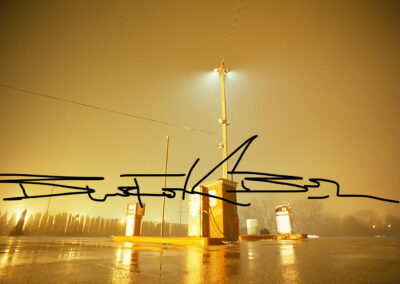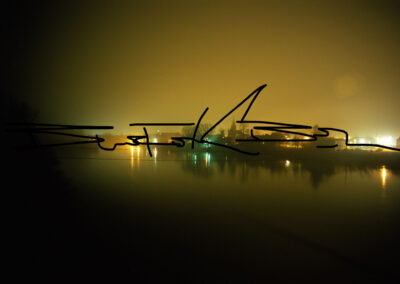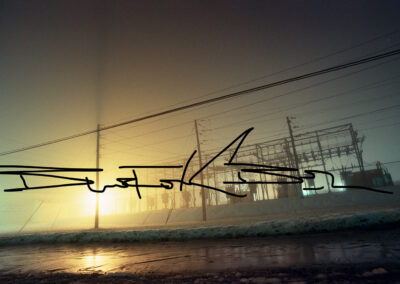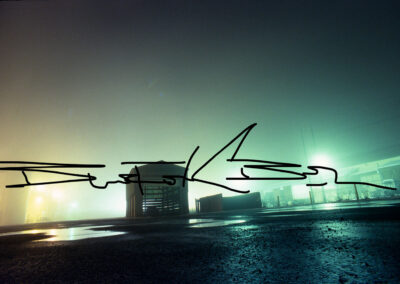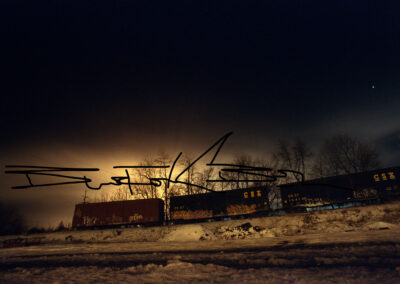Artist: Solo Exhibition
Burton C. BellBurton C. Bell
Press Release:
Industrial metal’s pioneering vocalist BURTON C. BELL will unveil his “Paradise Found” photography series at the Vincent Castiglia Gallery in Fort Lauderdale, Florida next month.
The series features twenty original, full-color photographs of abandoned industrial buildings taken in darkness and fog from 2002-2003. BELL‘s images are printed on aluminum using the Dye Sublimation process – an approach BELL calls “celluloid impressionism.” The photographs are representational of BELL’s industrial and science fiction aesthetic.
The Vincent Castiglia Gallery, which opened in 2022 to showcase Castiglia’s tattoo designs and selection of limited-edition painting prints, will be premiering BURTON C. BELL’s work on March 11th. The exhibit will run through May 23rd.
Read More
BURTON C. BELL is renowned for his thirty-year career as the frontman and vocalist in the groundbreaking industrial metal band Fear Factory. His vocal style became the template for a genre of music that became a mainstay of the metal music scene. BELL‘s fascination with science fiction and his love for industrial buildings and machinery inspired his dystopian lyrical concepts. These themes evolved into focal points for his photography, in particular the abandoned and derelict structures of a post-industrial society that have become obsolete.
In 2002, while recording new music in a studio surrounded by forest, it was in the borough of Milton, Pennsylvania that BELL found paradise within the small town that was once the heart of manufacturing in the Susquehanna Valley. Milton’s days of industry are long gone; however, the factories and buildings remain dormant and empty, inspiring BELL‘s music and vision.
Comments BELL, “I am grateful to have this opportunity to show ‘Paradise Found’ at the Vincent Castiglia Gallery so that I can share the beauty I saw during those few seconds of exposure. These prints have not been photoshopped. This is exactly what I was seeing.”
The event is part of BELL’s grander vision as he pursues his next chapter as a multi-faceted artist. For further inquiry please visit VincentCastigliaGallery.
http://www.
http://www.facebook.com/
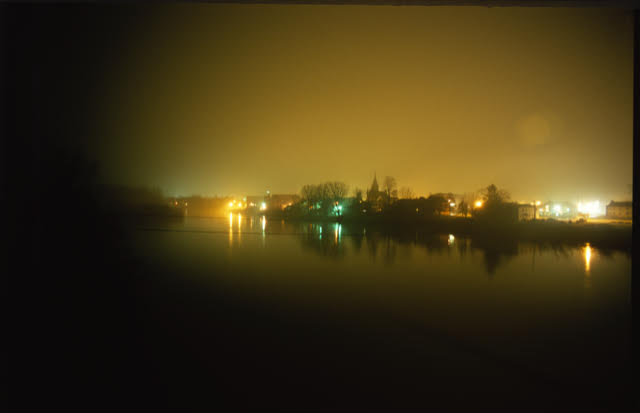
About
Artist Statement
“Paradise Found”-
Burton C. Bell’s -Celluloid Impressionism-
In 2002 I drove my 1969 Ford F250, Custom Camper Special from California to Central Pennsylvania, where I planned to work on new music that I had been writing. I decided to take a much-deserved sabbatical from the urban sprawl that is Los Angeles. I drove across the country in 4 days, sleeping in the back of my truck for rest, landing in Mifflinburg, PA.
When 2002 arrived, I had dedicated 22 years of my life to my band, Fear Factory. I had toured the world extensively in vans, RV’s, tour busses and airplanes, performing on stage with iconic acts like Black Sabbath, Slayer, Iron Maiden, and Megadeth. Fear Factory had made a mark in the metal-industrial world as an innovating force, in which I am still touted as the first vocalist to combine my guttural vocal with soaring, singing harmony vocals, inspiring many bands in our wake. Becoming the defining source that created a new genre. One of my proudest accolades was receiving a gold record for the Fear Factory album, Obsolete.
My 30-year catalogue of work expands beyond Fear Factory. I have appeared as a guest vocalist on many bands’ recordings, most notably Killing Joke, Static X, and Soulfly. I have also recorded a full-length album with Geezer Butler of Black Sabbath (G//Z/R), 2 albums with my project City of Fire, 2 Ministry albums (where my work earned me a Grammy nomination), and 2 albums for my passion project Ascension of The Watchers.
Read More
I spent 3 months residing in a secluded studio surrounded by forest, recording music that would later become the Ascension of The Watchers ICONOCLAST EP. It was during that time that I had fallen in love with the Susquehanna Valley. I decided to find a rental apartment near the studio where I was recording. My search ultimately led me to Milton, PA. In an early 20th century commercial building I found a 2-bedroom, 1- bath, second floor apartment overlooking the Susquehanna River.
This apartment was old, definitely haunted, and located directly at the intersection of Front Street and Center Street. Center Street ends at Front Street. On the river between Milton, and the Milton State Park. Milton State Park is an island in the Susquehanna River. My “study” was in the back room that overlooked the river and the east side of the park. There I would find myself gazing at the awesome beauty of the flowing water for hours, watching the river change every day with the seasons. It is the most beautiful river I have ever seen. My favorite season, Autumn, holds the most magic for me, the annual decay through frost exposure. During the Autumn and Winter months, the Susquehanna Valley creates a dense fog bank that holds the air of mystery, fairy tales and horror stories.
Living in Milton I experienced life in the Susquehanna Valley, and l learned of the history of this colonial era town. The migration of the Murder of Crows that occurred every Autumn, where hundreds of crows flocked to the Milton State Park, (a designated natural estuary for the migration of crows) to reside there for a couple months, all the while inhabiting every bare tree within the borough of Milton, truly evoking a sense of raw wonder within me. But what intrigued me most of all was the factory and industrial history Milton’s past held all around me.
Milton’s history is rich in manufacturing, from lumber to steel. Trees cut down in the northern forests would be floated down river to the mills of Milton. Canals once crossed Milton ,for the transport of goods from the river, throughout Milton. In 1864 the Milton Car Works (now AC&F), fabricators cars, and railroad box cars, built a factory in Milton, bringing the Reading Railroad through Milton. In 1928 Chef Boiardi (Boyardee) built his pasta factory in Milton. Other extensive manufacturing plants included car and woodworking, machinery shops, a flour mill, a textile shop, silk mill, sawmill, furniture factory, bricks, a tobacco company, and a paper-box factory. Milton was the heart of industrialism in Central Pennsylvania. Like many early industrial towns, as time proceeded to move forward Milton would also come to experience tragedies that would alter Milton’s economic boom.
In 1880 a fire reduced the entire town to ashes, having most people to pack up and leave, or rebuild. Every decade since 1939 Milton has suffered a major flood on the Susquehanna River. Most notable, which some people still talk about, is the catastrophic flood caused by Hurricane Agnes, which devasted the entire downtown area.
Most of the thriving manufacturing, and industrial goods suppliers that once operated in Milton have deserted, leaving the town to a mere skeleton of culture and capitalism that it used to be, rendering its residents obsolete.
After I had moved to Milton, I took many excursions to NYC, to immerse myself into the music and art scene, meeting new musicians and artists, searching for inspiration. I would explore galleries all over the Chelsea District. Inside one gallery I came across the photographs of Todd Hido.
Hido was showing large scale, yet simple photos of homes and neighborhoods taken at night in winter weather, using extended exposure instantly drew my attention. I studied Hido’s photographs in detail. All the images seemed familiar to me, and I felt in my soul that I could achieve the same result with my own camera.
Photography was my first passion as a child growing up. Since 1978 I was always capturing photos of landscapes and odd images, developing and printing my photographs, attending art classes and constant museum trips, to receiving a full scholarship to the Corcoran School of Art in Washington, DC. There I majored in photography my Foundations year, honing my knowledge and skills.
Upon returning to Milton, shortly after that visit, on one densely foggy night, I grabbed my 1982 Canon A1 and decided to experiment with shooting at night, in hopes to capture the fog as an effect. I walked around Milton at 1AM, looking for lighting that intrigued me. I wanted to capture the town I was falling in love with the way I saw it, a town of gothic mystery.
Using the Canon A1 loaded, with Ilford film, a five-inch tripod and my favorite lens, (Vivitar 19mm 1:3.8 aspect ratio), I wanted to create a cinematic moment. After 3 hours of walking and driving around Milton in the cold, laying on my belly on damp surfaces, usually in the middle of the street, I went back to my apartment, removed the film and placed the film in the cannister. On my next trip to NYC, I dropped the film off at my photo lab in Manhattan.
It was not until I retrieved my negatives and prints that I was able to see what I had captured. My mind was blown. The fog had created a vibrant glow around the tungsten, incandescent, and fluorescent street lights around Milton, conjuring an eerie effect of seamless light transition through the fog’s dense water vapor in the air, casting shadows and silhouettes into my camera lens. Images of taillights from passing vehicles captured during the extended exposure created a science fiction effect tin a couple images that is reminiscent of Blade Runner. Train tracks disappearing into the darkness, an empty cemetery lit by glowing streetlights in the distance, an abandoned textile warehouse with security lights shining through the cracks of the windows; these images, and others, all enhancing the beautiful decay that Milton has experienced. Since these photographs were taken, many of these locations have been razed.
All these images have not been altered in any photoshop, app, filter, touched or modified in any way. This is exactly what my camera captured, in real time between eleven to and 30 seconds, in concert with the music I was recording, and words I was writing. I was attempting to paint a picture within that time period that changed my life. I have termed the style of these images as Celluloid Impressionism; I captured the moment of shifting light onto celluloid film.
My fascination with industrial buildings and machines created two centuries ago still appeals to me. Those certain manufacturers that become obsolete due to modern invention are still resting where they once thrived, visible to those workers who have also become obsolete. These aspects of Milton were crucial to my inspiration in writing, music and photography, all of which have been my life saving ambitions. It was the perfect night to utilize my mechanical relic of the 20th century to capture these images on 35mm celluloid, film, these ghosts of industrialism standing dormant in the fog.
Within the abandon and decay I had found inspiration, creativity and paradise in Milton, and I hope these photos reflect this truth.
-Burton C. Bell

